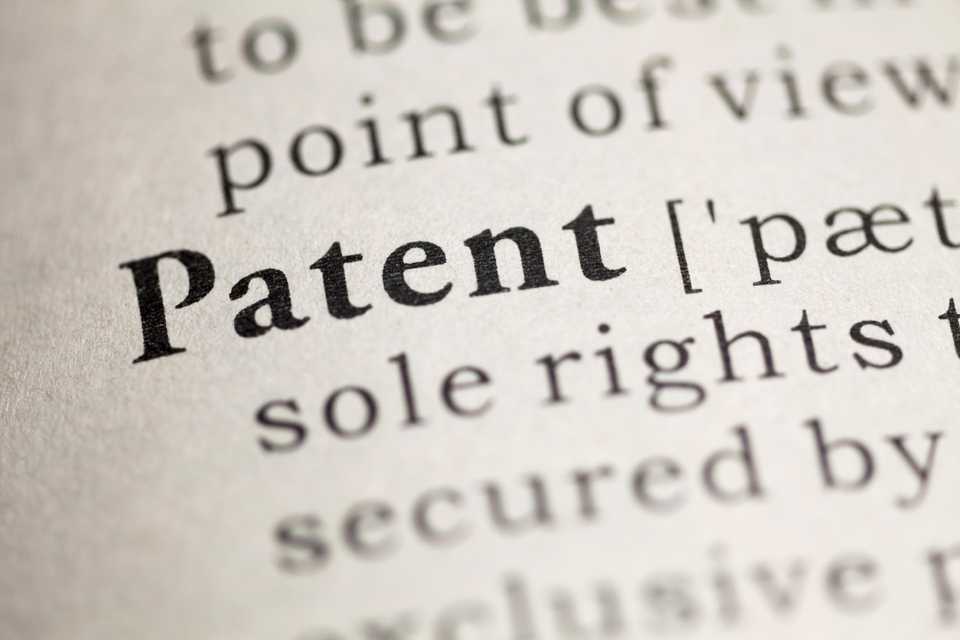If you have ever had a brilliant idea that you envisioned turning into a successful business, product, or project, this guide is here to help you navigate the intricate world of intellectual property.
Converting ideas into tangible ventures can be challenging, but with the right knowledge and protection, your efforts can be highly rewarding. In this article, we will delve into the significance of patenting, which plays a vital role in safeguarding your innovative concepts from unauthorized use by others.

Discover the main steps involved in obtaining a patent in Canada and learn how to secure your ideas, ensuring a competitive edge in the ever-evolving landscape of innovation and invention!
Qualifying for Patent Protection in Canada: Understanding Patentability Requirements
In Canada, obtaining patent protection requires meeting certain patentability criteria. They serve to ensure that the invention is deserving of exclusive rights and encourages innovation in various fields.
To qualify for a patent in Canada, your idea must satisfy the following key criteria: novelty, usefulness, and inventiveness.
- Novelty
Novelty refers to the requirement that your invention must be new. In Canadian patent law, an invention is considered new if it has not been disclosed to the public anywhere in the world before the filing date of your patent application.
This includes any prior disclosures such as publications, public use, or sales. Therefore, it is crucial to maintain confidentiality before filing your application to preserve the novelty of your invention.
- Usefulness
The invention must have practical utility, meaning it should have a specific, credible, and substantial use. It should be capable of providing some form of advantage, benefit, or solving a technical problem.
The utility requirement ensures that patents are granted for inventions that have practical value and contribute to technological progress.

- Inventiveness (Non-obviousness)
Inventiveness, also referred to as non-obviousness, requires that the invention involves an inventive step that would not be obvious to a person skilled in the field of the invention.
The invention should not be an obvious combination or modification of existing knowledge or prior art. It should possess a level of inventiveness that goes beyond what would be readily apparent to an average skilled person in the field.
The Canadian Intellectual Property Office Examination
To determine whether an invention meets the patentability requirements, the Canadian Intellectual Property Office (CIPO) conducts a thorough examination.
The examiner reviews the technical aspects of the invention and compares it with existing prior art to assess novelty, usefulness, and inventiveness. The examination process involves a detailed analysis of the patent application, including the description, claims, and any accompanying drawings or diagrams.
It's important to note that the interpretation and application of patentability requirements can vary depending on the specific technology or field of the invention.

What may be considered inventive in one field might be regarded as obvious in another.
Patent examiners rely on their technical expertise and knowledge of the relevant field to assess the inventiveness of the claimed invention. Understanding the patentability requirements in the Canadian legal context is essential to determine whether your idea is eligible for patent protection.
It is advisable to consult with a registered patent agent or intellectual property lawyer who can provide guidance tailored to your invention and assist you in preparing a strong patent application that meets the patentability criteria.
Performing a Comprehensive Patent Search and Assessing Invention Novelty
In the Canadian legal context, conducting a comprehensive patent search is a crucial step before proceeding with a patent application.
This process involves searching for prior art, which includes any existing patents, published patent applications, scientific literature, technical documents, and other publicly available information that may be relevant to your invention.

The purpose of this search is twofold: to assess the novelty of your idea and to identify potential conflicts with existing patents.
- Assessing Novelty
By conducting a patent search, you can evaluate the novelty of your invention. Novelty refers to the requirement that your invention must be new and not disclosed to the public before the filing date of your patent application.
A thorough search helps you determine whether similar inventions or prior art already exist. If prior art is found that discloses the same or similar features as your invention, it may impact the novelty of your idea and potentially affect the patentability.
- Avoiding Conflicts
In addition to assessing novelty, a patent search helps you identify potential conflicts with existing patents. By reviewing granted patents and published patent applications, you can determine if there are inventions that cover similar subject matter or have overlapping claims.
This knowledge is essential for avoiding infringement of existing patents and understanding the competitive landscape in your field. Identifying conflicting patents allows you to make informed decisions about the scope and potential limitations of your own patent application.

It's important to note that conducting a patent search can be a complex and time-consuming task. It requires expertise in searching databases, understanding patent classification systems, and analyzing patent documents.
While you can perform a preliminary search using online patent databases and search tools, engaging a lawyer who specializes in patent search and intellectual property is strongly advisable for a comprehensive and thorough search.
Crafting an Effective Patent Application in Canada: Structure, Content, and Compliance
Crafting an effective patent application is crucial when seeking patent protection in Canada. The application serves as a legal document that describes the invention, defines the scope of protection, and establishes the basis for examination by the Canadian Intellectual Property Office (CIPO).
To ensure a strong and compliant application, several key considerations should be addressed:
Detailed Description of the Invention
The patent application should include a comprehensive and detailed description of the invention. This description should enable a person skilled in the field to understand and reproduce the invention based on the information provided.
It should explain the technical aspects, functionality, and potential applications of the invention. Providing clear and precise descriptions can strengthen the patent application and help demonstrate the novelty and inventive step of the invention.
Patent Claims
Claims are a crucial element of a patent application, as they define the scope of protection sought for the invention. Claims should be carefully drafted to describe the essential features and elements of the invention precisely and clearly.
They should be broad enough to encompass potential variations and embodiments of the invention while avoiding being too broad to risk rejection for lack of novelty or inventiveness. Expert assistance from a registered patent agent or intellectual property lawyer can be beneficial in crafting well-drafted claims.
Drawings and Diagrams
In many cases, including drawings, illustrations, or diagrams can enhance the understanding of the invention and support the description and claims. Visual representations can provide additional clarity and help demonstrate the unique features or operational aspects of the invention.
The drawings should be properly labeled, referenced in the description, and comply with the formatting requirements set by the CIPO.

Formatting and Content Requirements
It is essential to adhere to the formatting and content requirements specified by the CIPO. The patent application should be organized and presented in a specific format, including sections such as a title, abstract, background, summary of the invention, detailed description, claims, and drawings.
Additionally, the application must comply with the rules regarding font size, page margins, language requirements, and filing fees. Non-compliance with these requirements may result in delays or rejection of the application.
Professional Assistance
Once again, seeking assistance from a registered patent agent or intellectual property lawyer is highly recommended. These professionals possess the knowledge and expertise in patent law and can provide guidance throughout the application process.
They can help with drafting and reviewing the application, ensuring compliance with legal requirements, optimizing the description and claims, and representing you in interactions with the CIPO.
Submitting Your Patent Application to the CIPO: Filing Process, Fees, and Application Assignment
Submitting your patent application to the Canadian Intellectual Property Office (CIPO) is a crucial step in the patent application process. It involves following specific procedures, paying the necessary fees, and obtaining an application number and filing date from the CIPO. Here's an overview of the filing process in the Canadian legal context:
- Application Method
You have two options for submitting your patent application to the CIPO: electronically or by mail. Electronic filing is generally preferred and provides a more efficient and convenient process.
The CIPO provides an online portal called the Canadian Patents Database, where you can file your application electronically. Alternatively, you can choose to file a physical copy of your application by mail.
- Required Fees
When submitting your patent application, you must include the required fees. The fee structure varies depending on factors such as the type of applicant (individual, small entity, or large entity) and the number of claims.
| Fees respecting applications | |
|---|---|
| Small Entity Fee | 2023 fee: $210.51 |
| 2024 fee: $224.82 | |
| Standard Fee | 2023 fee: $421.02 |
| 2024 fee: $449.65 | |
| Late fee | 2023 fee: $150.00 |
| 2024 fee: $150.00 |
It is important to refer to the CIPO's fee schedule to determine the exact amount payable. Failure to pay the required fees will result in delays or the rejection of your application.
- Application Number and Filing Date
Upon receiving your patent application, the CIPO will assign it an application number and filing date. These serve as crucial identifiers for your application throughout the examination process.
The application number is unique to your filing and is used for correspondence and tracking purposes. The filing date establishes the priority of your application, ensuring that your invention is protected against subsequent filings with similar subject matter.
- Receipt Acknowledgment
Once your application has been successfully submitted, the CIPO will issue a receipt acknowledgment. This acknowledgment serves as proof of submission and contains essential information, including the application number and filing date.
It is advisable to retain this acknowledgment for future reference and to track the progress of your application.
- Application Assignment
After the submission of your patent application, it undergoes a formalities examination by the CIPO. This examination ensures that the application meets the necessary administrative and procedural requirements.
If any deficiencies or missing elements are identified, the CIPO will notify you, allowing an opportunity to rectify the issues within a specified timeframe.

These initial steps set the foundation for the subsequent stages of the patent application process in Canada.
Patent Examination Process in Canada: Formalities, Deficiencies, and Substantive Evaluation
In the Canadian legal context, the patent examination process plays a crucial role in determining the patentability of your invention.
After filing your patent application with the Canadian Intellectual Property Office (CIPO), the application goes through two main stages of examination: formalities examination and substantive examination.
First step: Formalities Examination
Upon receipt of your application, the CIPO conducts a formalities examination. This examination ensures that your application meets the administrative and procedural requirements set by the CIPO.
The examiner reviews the application for completeness, accuracy, and compliance with formal requirements, such as proper filing format, payment of fees, and inclusion of necessary documents.
If any deficiencies or missing elements are identified during the formality’s examination, the CIPO will issue an official notice outlining the deficiencies.
You will be given an opportunity to respond to the notice within a specified timeframe and address the identified issues. It is essential to carefully review the notice and promptly provide the requested information or amendments to ensure that your application satisfies the formal requirements.
Second step: Substantive Examination
Once the formalities examination is completed, and any deficiencies are rectified, your application proceeds to substantive examination.
The substantive examination focuses on assessing the technical content of your patent application, including the novelty, inventiveness, and utility of your invention.
During the substantive examination, a patent examiner reviews the application in detail, compares it to existing prior art, and evaluates whether the invention meets the patentability requirements.
The examiner may request additional information, clarifications, or amendments to the claims or description to further evaluate the patentability of your invention.
It is crucial to respond to any objections or requests from the examiner within the given timeframe.
Failure to respond adequately or within the specified period may lead to the abandonment of your application. You can provide arguments, amendments, or additional evidence to support the patentability of your invention and overcome any objections raised by the examiner.
The Substantive Examination Stage of the Patent Process in Canada
In the Canadian legal context, the substantive examination stage is a critical phase in the patent process. During this stage, a patent examiner evaluates the content of your patent application, assesses the patentability of your invention, and compares it to prior art.

The examiner's evaluation focuses on determining whether your invention meets the criteria of novelty, inventiveness, and utility.
Here's a closer look at the substantive examination stage in Canada:
- Examiner's Review: Upon reaching the substantive examination stage, a patent examiner is assigned to review your application.
- Patentability Assessment: During the examination, the examiner evaluates whether your invention meets the patentability requirements such as novelty.
- Examiner's Objections and Requests: During the substantive examination, the patent examiner may raise objections or request additional information, amendments, or clarifications.
- Applicant's Response: When responding to the examiner's objections or requests, you have an opportunity to provide arguments, amendments, additional evidence, or clarifications.
Successfully navigating the substantive examination stage in the Canadian legal context is crucial for obtaining a granted patent.
By addressing the examiner's objections and requests and providing persuasive arguments and evidence, you increase the chances of achieving patent protection for your invention.
Patent Allowance and Grant: Advancing from Examination to Patent Approval in Canada
In the Canadian legal context, the patent allowance and grant stage marks a significant milestone in the patent application process. Once the patent examiner determines that your invention meets the requirements for patentability, they will issue a Notice of Allowance.
This notice indicates that your application has been approved, and you are one step closer to obtaining a granted patent.
Here's an overview of the allowance and grant process in Canada:
Firstly, we have the “ Notice of Allowance ”. Upon determining that your invention meets the patentability criteria, the patent examiner will issue a Notice of Allowance.
This notice informs you that your application has been allowed and that you are eligible to proceed to the grant stage. The “ Notice of Allowance” typically includes a specified period within which you must complete the necessary steps to secure the grant of your patent.
Following suit, we have the “ Final Fees Payment ”. To proceed to the grant stage, you are required to pay the final fees within the specified period stated in the Notice of Allowance.
The final fees consist of the remaining balance of the application fee and any outstanding fees associated with the examination process. The exact amount payable can be found in the CIPO's fee schedule.

Eventually – we’ll see the “ Grant of the Patent ”. Once the final fees are paid, the CIPO will proceed with the grant of your patent. The grant establishes your exclusive rights to the invention as outlined in the claims of your patent application.
It is important to note that the granting of a patent does not guarantee absolute protection, as the patent's validity may be subject to legal challenges or disputes.
Final steps leading up the grant
- Publication in the Canadian Patents Database
The CIPO will publish your patent in the Canadian Patents Database. This public database serves as a repository of granted patents in Canada. The publication of your patent provides public notice of your invention and its protected scope.
- Post-Grant Maintenance
After the grant, you are responsible for maintaining your patent by paying annual maintenance fees. The CIPO requires the payment of these fees to keep the patent in force and to preserve your exclusive rights.
It is important to note that the patent allowance and grant process may take some time, and the duration can vary depending on various factors such as the complexity of the invention, the backlog of applications at the CIPO, and the responsiveness of the applicant.
Navigating the patent allowance and grant stage requires careful attention to deadlines and compliance with the CIPO's requirements.
Engaging the services of a registered patent agent or intellectual property lawyer can help ensure a smooth transition from examination to patent approval, including timely payment of the final fees and adherence to post-grant maintenance requirements.
By successfully completing the patent allowance and grant process, you secure the official grant of your patent, which provides exclusive rights to your invention and establishes your legal protection in Canada.
Sustaining Patent Protection: Post-Grant Maintenance and Annual Fees in Canada
In the Canadian legal context, sustaining patent protection involves fulfilling the post-grant maintenance requirements set by the Canadian Intellectual Property Office (CIPO).
Once your patent is granted, it is essential to stay vigilant in paying the required annual maintenance fees to keep your patent in force. Failure to pay these fees within the specified timeframes can result in the abandonment of your patent.

Here's an overview at post-grant maintenance and annual fees in Canada:
- Annual Maintenance Fees
- Payment Deadlines
- Payment Methods
- Consequences of Non-Payment
- Reinstatement
- Monitoring and Record-Keeping
It is important to note that the responsibility for post-grant maintenance lies with the patent owner. Engaging the services of a registered patent agent or intellectual property lawyer can help you manage the post-grant maintenance process effectively.
Get the help you need to make your vision come true!
As you can see the patenting process can present many obstacles through its complexity. Don’t let this stop you from pursuing a vision or following through with an innovative idea you have.
Let a qualified lawyer specialized in intellectual property and patent law – help you undertake this endeavor! They will be able to help you complete all the steps efficiently and successfully.
Contact JuriGo immediately to be connected with a legal professional with the background you need to make your dreams reality.
It’s free, simple, and accessible! Just click on the link below and fill out the form.